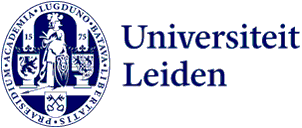
AI recognizes anxious youth based on their brain structure
A unique multicenter study, including about 3,500 youth between 10 and 25 years old from across the globe, shows that artificial intelligence - specifically machine learning - is able to identify individuals with anxiety disorders based on their unique brain structure.
This study looked at cortical thickness and surface area, along with volumes of deep-lying brain regions. While promising, the results are still far from perfect. To improve them, the algorithms must be further refined and other types of brain data, such as brain function and connections, must be added.
More personalized approach
Nonetheless, it remains pretty remarkable that these initial results tend to hold - are generalizable - in such a diverse group of youngsters in terms of ethnicity, geographical location and clinical characteristics. This renders the study outcomes rather fascinating. According to lead researcher Moji Aghajani – Assistant Professor at the Institute of Education & Child Studies at Leiden University - this kind of research could eventually facilitate a more personalized approach to prevention, diagnostics and care. This is in part the reason why these findings were recently published in a high impact outlet such as Nature Metal Health.
Anxiety disorders typically first emerge during adolescence and early adulthood. These disorders cause major emotional, social and economic problems for millions of youngsters worldwide. However, it is unclear which brain processes are involved in these anxiety disorders. According to Moji Aghajani "This incomplete understanding of underlying brain bases is largely due to our simplistic approach to mental disorders amongst youths, in which clinical studies are often too small in size, with way too much focus on the “average patient” rather than the individual. This moreover concours with use of traditional analytical techniques, which are unable to produce individual-level outcomes."
However, the field is slowly changing, with more focus on individuals and their unique brain characteristics, through the use of large and diverse datasets - also known as 'big data' - combined with artificial intelligence (AI). "So, this is exactly what we have been doing within the ENIGMA Anxiety Consortium: AI and big data for personalized inferences. Heartfelt thanks to ZonMW, NWO and the Leiden University Fund (LUF), for making this complex and labor-intensive study possible", Aghajani added.

Unique collaboration
Moji Aghajani, together with his postdoc Willem Bruin, and approximately 250 other colleagues worldwide, represent the ENIGMA Anxiety Consortium. This consortium brings together researchers from around the world with the main goal of gaining reliable and reproducible insights into the neurobiological characteristics of anxiety disorders.
This is done by sharing data, applying fully harmonized data processing, and conducting large-scale mega-analyses. Moji Aghajani outlines that consortia such as ENIGMA have mainly emerged as a response to the ongoing replication crisis that has long hampered psychiatry and behavioral sciences and led to stagnation in the field.
